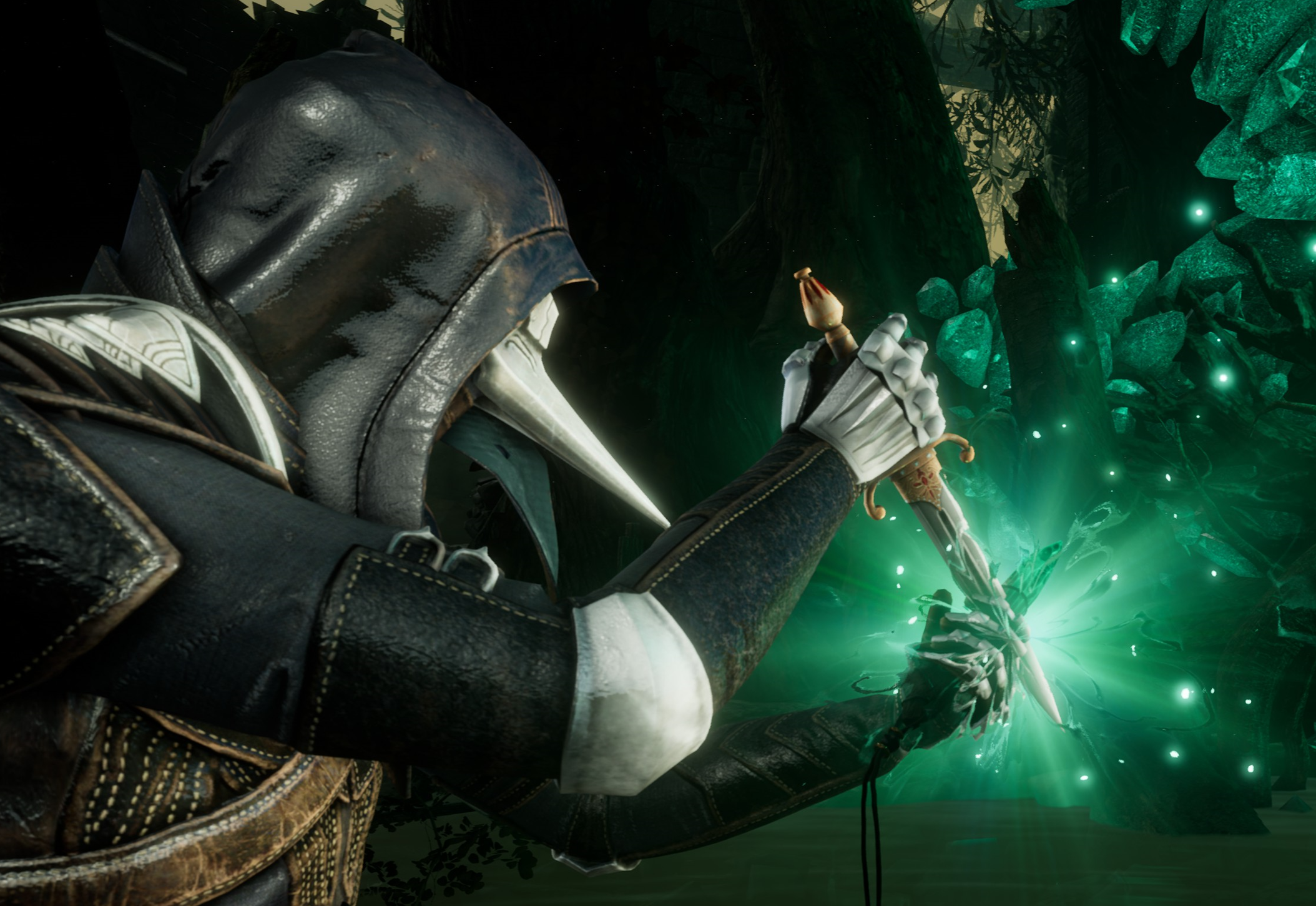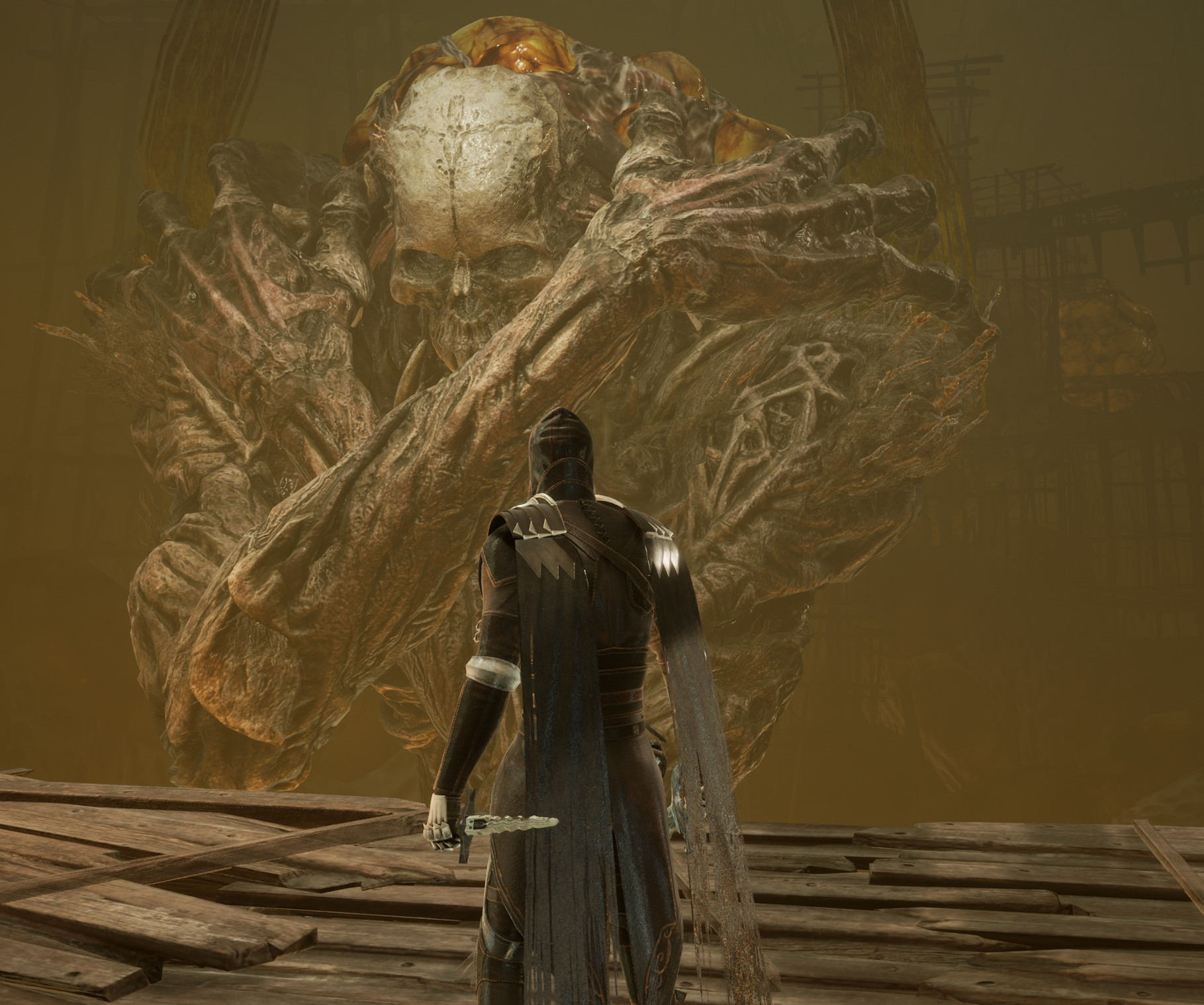Game Review: Thymesia
(This review is spoiler-free.)
One can argue that Thymesia isn’t truly a horror title. It uses a lot of horror imagery, and beyond someone having particular phobias or generalized anxiety around horror environments, it’s not likely to scare many people. Still, if one examines the plot, artistic style, encounters and inspiration, it’s not a stretch to say that this review belongs here. I’m getting this out of the way early so that those who want to hang around can proceed, and those who hold a rigid delineation for what constitutes horror can spend their time watching horror influencers practice their nu metal guitarist head tilt.
With all that cleared up, let’s get started:
Thymesia is an Soulsborne-style action-RPG which earned a lot of buzz prerelease thanks to its fast-paced combat and dark fantasy aesthetic. The main character, Corvus, traipses about the vaguely Victorian settings in tight leathers and a sveltified plague doctor mask, and, for reasons beyond me, that seems to be a magical formula right now.
The trick worked, and I added Thymesia to my Steam wishlist pretty much up on first viewing of the trailer. I’m an avid Dark Souls fan and can’t help but crack open my digital wallet any time something new in the subgenre hits the market.
With a $24 price tag, Thymesia presents decent value for the sum of its parts, though the A-tier visuals, excellent promotion, and flashy combat will probably have you thinking you’re getting something in the AAA range, at least at the outset.
The Story and the World
The story opens in the kingdom of Hermes, a glorious place that sits atop a large tree where imperious lords and kings…still sort of live? See, the world has been overrun by a mysterious plague and everyone is zombified, but important people to a lesser degree. You know, Dark Souls stuff.
You take on the role of an amnesiac agent of the kingdom who has been charged with threading the needle so that everything can go back to the way it was. Over the course of the game you’ll not only attempt to fulfill your purpose in restoring Hermes, but presumably recover some of Corvus’s memory along the way. You’re accompanied by a small and wholly unhelpful ghost child who will fulfill the Soulsborne roles of fire keeper, teleport beacon, and fetch-quest item recipient, and this is probably the first indicator that Thymesia once had a much more ambitious development plan.
The world’s hub, Philosopher’s Hill, is beautiful but as empty and undeveloped as the ghost child that accompanies you. There are a number of stations in the hideout where you can spend your talent points, brew alchemical boons, and travel to new missions. The only problem here is that you can do all of these from any lantern (bonfire) and thus it all feels very vestigial.
Practically speaking, there’s no gameplay reason for Philosopher’s Hill to even exist, since all of its functions are available in more convenient places. No new NPCs will arrive to offer cryptic quests, and the single change you’ll mark over the course of the game is an increased level of fog that rolls in once you’ve unlocked the final mission (and said fog subsequently retreats for good if you elect to go do another side mission first). It’s sad more than anything, and you can tell that the resources or talents available to the developer ultimately didn’t match their ambition.
A comparable title, Mortal Coil, at least knew what it was from the outset and didn’t leave all these gaping wounds in the game design where something was supposed to go.
Combat, Talents, and Customization
While the story and world may feel hollow, Thymesia’s combat absolutely shines, and solid battle mechanics are far more important to the enjoyability of a Soulsborne game than any other attribute. One part Bloodborne, one part Sekiro, Corvus uses saber and claw while dancing and deflecting his way through battles. There’s also a unique dual-health system where you use your saber to deplete an initial health bar and your claws to inflict permanent damage on a foe once they’ve been made vulnerable. It doesn't make a great deal of sense, but it is both great fun and mechanically interesting. Again, that’s what is important from a gameplay perspective.
Talent trees are sparse, but there’s some inkling of customization among the early choices. Beyond your core moveset, you’ll also use a number of weapons based on the attribute you choose to develop: Strength, Vitality, Plague (which enhances claw attacks and special ability points). None of it is exactly interesting, and there’s an extremely awkward feather mechanic to parry special attacks that I feel you’re better off ignoring, but the builds and talents serve to support the core combat well enough, and thus I can’t begrudge this element too much.
One of the key strengths of the talent trees is that they allow you to adapt your playstyle to a degree. Suck at parrying? You can spend talents to increase your parry window at the cost of parry damage, or, if you’re a punishment glutton like me, the inverse, causing your parry window to narrow but inflict massive damage if you are quick enough to manage it. Further, if you hate parrying altogether, you can change the ability to a block, albeit at considerable penalty.
Little options like this are a great thing in the Soulsborne genre, as they allow players to circumvent their own weaknesses at a cost. I personally hate the feather-throw-special-parry mechanic but was able to ignore it by choosing a talent that could counter these attacks by dodging into them. This is a great feature, and games like Sekiro would have been much more accessible if their developers made comparable design choices.
Enemies and Bosses
While I’ll praise Corvus’s combat kit, the same can’t be said for many of his foes. Virtually all of them are zombie humanoids equipped with half a dozen variations of medieval weaponry, and by the time you’re midway through the game, one won’t post a great deal of challenge when compared to another. Each has a slightly different attack pattern that you will learn fairly quickly, and as you chase down the final challenge of each mission, you’ll be praying for a pack of dogs to come out from the next corner and surround you. But alas, there are no dogs.
All that being said, the bosses are pretty good, with the best of them ready to take their place among the better creations of FromSoftware, but they’re few, and some may be too challenging for the average player. Urd, a swordswoman you encounter mid-game, is the best of these, and she provides a brutal but terribly fun challenge. For the hardcore Soulsborne fans with money to burn, Thymesia may be worth purchasing for this fight alone. Other bosses are less exciting, but the fact that they give a break from the monotony of slaughtering zombie guards with spears and swords makes them appreciable.
Level Design, Secrets, World
The real tragedy of the lackluster enemies is that they undermine Thymesia’s fundamentally strong combat, which can’t stay interesting even through the short eight-to-twelve hours it takes to finish the game. To make matters worse, the level design and elements within are potentially more dull than the monsters that populate them. There is nothing to discover, no secrets or hidden paths; no bells to ring or fires to light.
Compoundingly befuddling is that some of the later levels are maze-like, doubling back on each other before spiraling off into half a dozen passages that are all equally empty. At one point I took a ninety-second detour to climb three out-of-the-way ladders for the equivalent of one-hundred souls (currency). What is the intention behind this from a design perspective? So much purposeless complexity when there is literally never anything of interest to find in Thymesia.
By the 6th hour, I was no longer interested in the idea of exploration, knowing that whatever was behind the next corner, it wouldn’t be worth seeing. More damning is that I was never disabused of this conclusion even though I continued to map out every last corner.
To (probably) be grossly disingenuous to the developers, Thymesia feels very much like ‘rush this out there and hope it’s a hit so we can make a real game through DLC.’ Which is sad, but increasingly the case with indie games these days. I both begrudge and empathize with the creators, whom I suspect had their ambitions shackled by limitations, be they financial or otherwise.
That being said, there’s a dearth of creativity in Thymesia’s story and level design that feel unforgivable, as we have a game that seems built to look nice in trailers but may leave those who purchase it ultimately disheartened.
Verdict: 5.8/10
Strengths
Good combat fundamentals, blending Bloodborne and Sekiro
Excellent graphics, technically and artistically
Flexible talent options make the game more accessible than some Soulsborne titles
Weaknesses
Wasteful and tedious level design, particularly later on
A forgettable story, poorly told
Feel custom built for trailers and short streams
You may also like: Mortal Coil, Dark Souls
Thymesia is available on on Steam, GOG.com, Xbox, PS5, and Nintendo Switch.






